It’s estimated that 45 per cent of Australians will experience a mental health condition in their lifetime, the most common being anxiety and depression.1 Anxiety and depression tend to affect people during their prime working years (16 to 64 years).2 So, it is likely that as an employer, you will employ someone who suffers from a mental health condition.
Currently, untreated mental health conditions cost Australian workplaces approximately $10.9 billion per year. This comprises $4.7 billion in absenteeism, $6.1 billion in presenteeism and $146 million in compensation claims.3
Employers ought to take a proactive approach to workplace mental health, particularly given the development of mental illnesses can be contributed to by an unhealthy, stressful work environment, or through a particular workplace incident.
What can you do as an employer to manage mental health in the workplace?
Research indicates that ‘job stress and other work-related psychosocial hazards are emerging as the leading contributors to the burden of occupational disease and injury’.4
WorkSafe Victoria recommends the following risk management process to manage mental health in the workplace:
– Find the hazards in your workplace. Identify factors associated with work-related stress (e.g. job demands, stresses).
– Assess the risk of injury with those hazards. That means assessing the likelihood and consequence of injury or illness resulting from work-related stress. You don’t have to do a formal risk assessment if there is already information about the risk and how to control it.
– Control the risks. Implement risk-control measures to eliminate work-related stress risk so far as is reasonably practicable. If the risk can’t be eliminated then, reduce that risk so far as is reasonably practicable.
– Monitor and review your risk controls to ensure they address the organisational factors that have contributed or may contribute to work-related stress. Revise the controls if they are not working.5
– Find the hazards in your workplace. Identify factors associated with work-related stress (e.g. job demands, stresses).
– Assess the risk of injury with those hazards. That means assessing the likelihood and consequence of injury or illness resulting from work-related stress. You don’t have to do a formal risk assessment if there is already information about the risk and how to control it.
– Control the risks. Implement risk-control measures to eliminate work-related stress risk so far as is reasonably practicable. If the risk can’t be eliminated then, reduce that risk so far as is reasonably practicable.
– Monitor and review your risk controls to ensure they address the organisational factors that have contributed or may contribute to work-related stress. Revise the controls if they are not working.5
We recommend that employers:
- Undertake a commitment to promoting positive mental health in the workplace;
- Provide effective and genuine communication between to employees, aiming to foster a supportive and more positive work environment;
- Actively work to create a less stressful work culture, and ensure that employees feel appreciated; and
- Implement workplace policies which encourage employees to seek help for mental health conditions.
Such action could not only lead to a more productive workplace, it could also help to minimise the risk of legal liability.
Please contact us if your business requires advice in relation to managing mental health In the workplace. We can be reached on (03) 9642 0435 or at info@phsolicitor.com.au. Nothing in this article should be relied on as legal advice. The contents of this article should be regarded as information only, and for specific legal matters, independent advice should always be sought.
Endnotes:
(1) Australian Bureau of Statistics (ABS). (2008). National Survey of Mental Health and Wellbeing: Summary of Results, 2007. Cat. no. (4326.0). Canberra: ABS.
(2) Australian Bureau of Statistics. (2008). National Survey of Mental Health and Wellbeing: Summary of Results, 2007, Table 1. Cat. no. (4326.0). Canberra: ABS.
(3) PwC. (2014) ‘Creating a mentally healthy workplace: return on investment analysis’. Accessed online from
(2) Australian Bureau of Statistics. (2008). National Survey of Mental Health and Wellbeing: Summary of Results, 2007, Table 1. Cat. no. (4326.0). Canberra: ABS.
(3) PwC. (2014) ‘Creating a mentally healthy workplace: return on investment analysis’. Accessed online from
http://www.headsup.org.au/docs/default-source/resources/beyondblue_workplaceroi_finalreport_may-2014.pdf
(4) LaMontagne AD, Keegel T & Vallance D (2007) Protecting and Promoting Mental Health in the Workplace: Developing a Systems Approach to Job Stress, Health Promotion Journal of Australia 2007,18, 221–8 (citing Marmot M, Siegrist J & Theorell T (2006) Health and the Psychological Environment at Work, Social Determinants of Health 2006, 97–130)
(5) See https://www.worksafe.vic.gov.au/work-related-stress-safety-basics
(4) LaMontagne AD, Keegel T & Vallance D (2007) Protecting and Promoting Mental Health in the Workplace: Developing a Systems Approach to Job Stress, Health Promotion Journal of Australia 2007,18, 221–8 (citing Marmot M, Siegrist J & Theorell T (2006) Health and the Psychological Environment at Work, Social Determinants of Health 2006, 97–130)
(5) See https://www.worksafe.vic.gov.au/work-related-stress-safety-basics


